ARB Comparison Tool
Compare ARBs Based on Your Needs
Select the features that matter most to you to find the best ARB alternative to candesartan.
Recommended ARB Alternative
Key Features of Each ARB
Candesartan (Atacand)
- Half-life: 9-12 hours
- Onset: 2-4 hours
- Cost: ~$30/month
- Best for: Steady BP control
- Side effects: Dizziness, hyperkalemia
Losartan
- Half-life: 2 hours (metabolite ~6-9 hours)
- Onset: 1-2 hours (active metabolite later)
- Cost: ~$12/month
- Best for: Cost-sensitive patients
- Side effects: Cough, mild renal changes
Valsartan
- Half-life: 6-9 hours
- Onset: ~30 minutes
- Cost: ~$18/month
- Best for: Acute hypertension
- Side effects: Headache, fatigue
Irbesartan
- Half-life: 11-15 hours
- Onset: 2-4 hours
- Cost: ~$22/month
- Best for: Diabetic kidney disease
- Side effects: Dizziness, low cough risk
Telmisartan
- Half-life: ~24 hours
- Onset: 2-4 hours
- Cost: ~$25/month
- Best for: Missed doses, metabolic syndrome
- Side effects: Upper respiratory infections, rare liver issues
Olmesartan
- Half-life: 13-15 hours
- Onset: 1-2 hours
- Cost: ~$28/month
- Best for: When other ARBs don't work
- Side effects: Diarrhea, rare sprue-like enteropathy
If you’ve been prescribed Atacand (candesartan) for high blood pressure, you might be wondering whether another drug would work better, cost less, or have fewer side effects. This guide breaks down candesartan’s main rivals, highlights where each shines, and gives you a simple checklist so you can talk to your doctor with confidence.
TL;DR - Quick Takeaways
- Candesartan is a once‑daily ARB with a long half‑life, ideal for steady blood‑pressure control.
- Losartan is the most studied ARB, good for patients who need a cheaper option.
- Valsartan offers a rapid onset, useful when fast blood‑pressure reduction is needed.
- Irbesartan is often chosen for people with diabetic kidney disease.
- Telmisartan has the longest half‑life and may benefit metabolic syndrome.
What Is Candesartan (Atacand)?
Candesartan is a prescription medication marketed under the brand name Atacand. It belongs to the class of drugs known as angiotensin II receptor blockers (ARBs), which relax blood vessels by blocking the hormone angiotensin II. Candesartan typically starts working within 2‑4 hours and has a half‑life of about 9‑12 hours, allowing once‑daily dosing. The usual adult dose for hypertension is 8mg or 16mg taken orally.
How ARBs Work
Angiotensin II receptor blockers (ARBs) block the AT1 receptor, preventing angiotensin II from narrowing blood vessels. This results in lower systemic vascular resistance and, consequently, reduced blood pressure. Because ARBs do not affect the breakdown of bradykinin, they tend to cause fewer coughs and angio‑edema compared with ACE inhibitors.
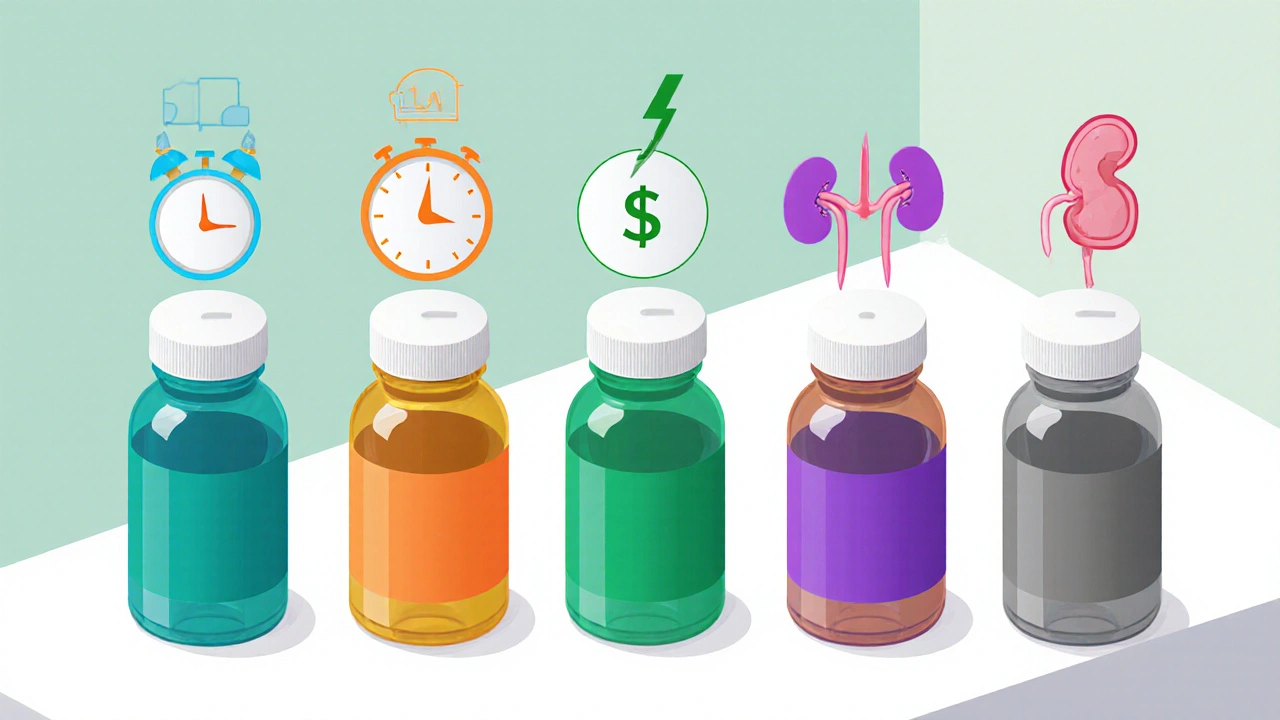
Top Alternatives to Candesartan
Below are the most common ARBs doctors prescribe when they want a slightly different profile-whether it’s cost, kidney protection, or dosing convenience.
Losartan
Losartan was the first ARB approved in the U.S. (1995) and remains a go‑to when price matters. It has a half‑life of 2hours, so a metabolite (EXP3174) provides the longer effect. Typical dose: 25‑100mg once daily. Notable side effects include dizziness and mild hyperkalemia.
Valsartan
Valsartan offers a faster onset (about 30minutes) and is useful in acute hypertension settings. Standard dosing ranges from 80‑320mg daily. It’s also approved for heart‑failure management. Common side effects: headache, fatigue.
Irbesartan
Irbesartan shines in patients with diabetic nephropathy because it reduces albuminuria. Doses run from 150‑300mg once a day. It carries a low risk of cough and is generally well tolerated.
Telmisartan
Telmisartan has the longest half‑life among ARBs (≈24hours), which makes it a solid choice for patients who miss doses. The usual dose is 40‑80mg daily. It also exhibits partial PPAR‑γ agonist activity, offering modest metabolic benefits.
Olmesartan
Olmesartan provides strong blood‑pressure reduction and is often prescribed when other ARBs haven’t achieved target levels. Dose: 20‑40mg daily. A rare but serious side effect is sprue‑like enteropathy, so monitoring GI symptoms is important.
Side‑by‑Side Comparison
| Drug | Typical Dose (mg) | Onset of Action | Half‑Life | Average Monthly Cost (US $) | Notable Side Effects |
|---|---|---|---|---|---|
| Candesartan (Atacand) | 8‑16 | 2‑4hr | 9‑12hr | ≈30 | Dizziness, hyperkalemia |
| Losartan | 25‑100 | 1‑2hr (active metabolite later) | 2hr (metabolite ≈6‑9hr) | ≈12 | Cough, mild renal changes |
| Valsartan | 80‑320 | ≈30min | 6‑9hr | ≈18 | Headache, fatigue |
| Irbesartan | 150‑300 | 2‑4hr | 11‑15hr | ≈22 | Dizziness, low incidence of cough |
| Telmisartan | 40‑80 | 2‑4hr | ≈24hr | ≈25 | Upper‑respiratory infections, rare liver issues |
| Olmesartan | 20‑40 | 1‑2hr | 13‑15hr | ≈28 | Diarrhea, sprue‑like enteropathy (rare) |
Which ARB Is Right for You?
Choosing the best alternative isn’t a one‑size‑fits‑all decision. Consider the following factors:
- Cost sensitivity: Losartan usually costs the least, making it a good starter if insurance coverage is limited.
- Kidney protection: Irbesartan has strong data supporting reduced albuminuria in diabetics.
- Adherence concerns: Telmisartan’s 24‑hour half‑life tolerates occasional missed doses better than shorter‑acting ARBs.
- Rapid pressure drop needed: Valsartan’s quick onset helps in emergency hypertension management.
- Side‑effect profile: If you experienced cough on an ACE inhibitor, any ARB-including candesartan-should be safer, but some patients report lower incidences with irbesartan.
Decision Checklist
- Ask your doctor about your current blood‑pressure goals and any comorbidities (diabetes, kidney disease, heart failure).
- Check your insurance formulary. If a drug is “non‑preferred,” your out‑of‑pocket cost could jump dramatically.
- Consider dosing convenience. Once‑daily dosing is ideal, but if you tend to forget doses, pick a drug with a longer half‑life.
- Review side‑effect histories-especially any prior reactions to ARBs or ACE inhibitors.
- Schedule a follow‑up in 4‑6 weeks to measure blood pressure and labs (potassium, creatinine).
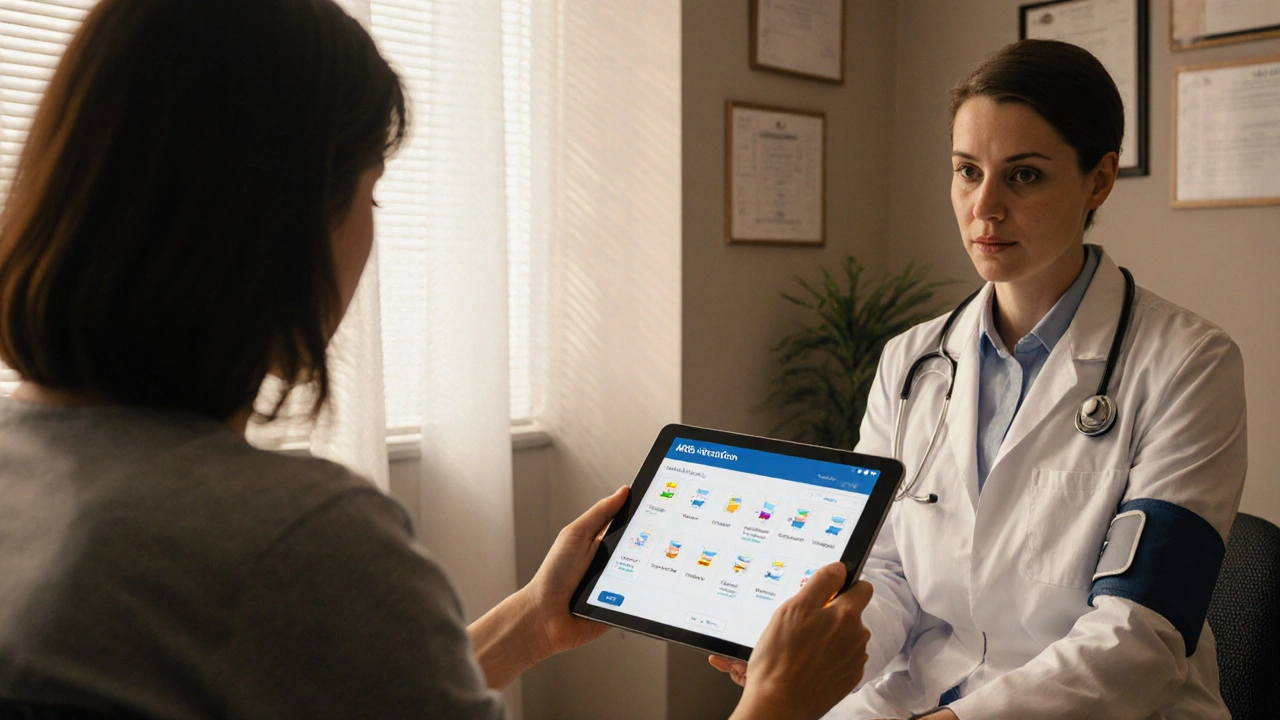
Frequently Asked Questions
Can I switch from Atacand to another ARB without a wash‑out period?
Yes. ARBs share the same mechanism, so doctors usually transition directly, adjusting the dose to match the new drug’s potency. Your physician will monitor blood pressure and labs after the switch.
Is candesartan better for heart failure than the other ARBs?
Candesartan is approved for heart‑failure with reduced ejection fraction, but so are valsartan and telmisartan. Clinical trials show similar mortality benefits, so the choice often depends on dosing convenience and cost.
What should I do if I develop a cough while on an ARB?
Cough is less common with ARBs than ACE inhibitors, but it can still happen. Report it to your doctor; they may switch you to a different ARB or lower the dose.
Are there any diet restrictions when taking candesartan?
Avoid excess potassium (e.g., salt substitutes) because ARBs can raise serum potassium. Also limit alcohol, which can increase blood‑pressure spikes.
How often should labs be checked after switching ARBs?
Typically, doctors order a baseline metabolic panel, then repeat it after 2-4 weeks to ensure potassium and kidney function remain stable.
Armed with this side‑by‑side view, you can have a clearer conversation with your healthcare provider about whether candesartan alternatives fit your lifestyle, budget, and health goals.
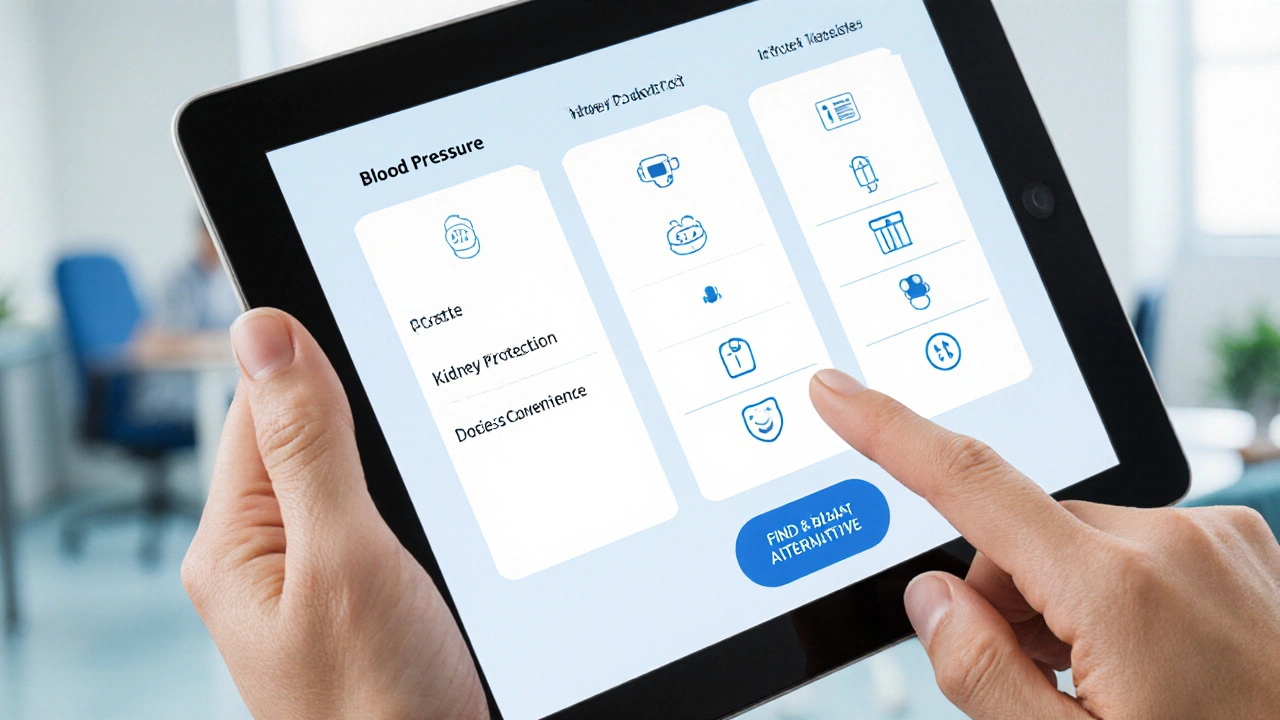


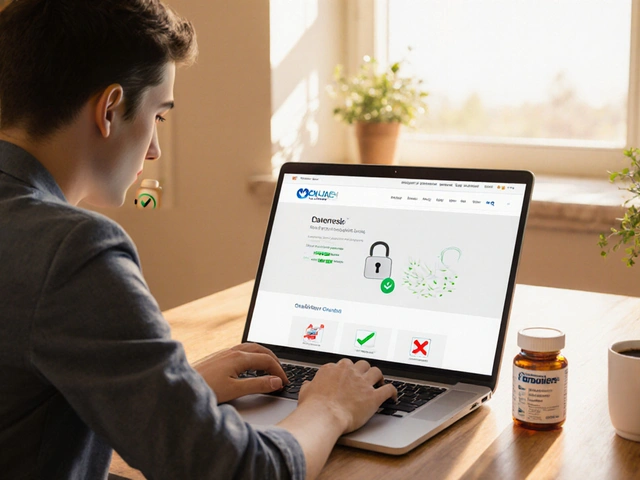
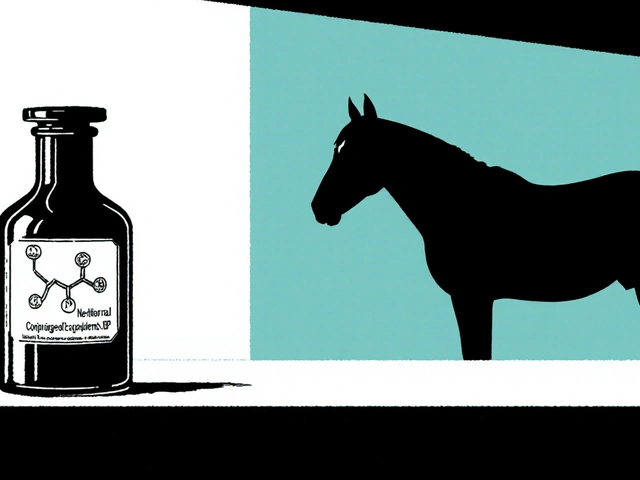

Comments
Kasey Mynatt
October 1, 2025 AT 16:45 PMHey folks, just a gentle reminder to run those labs after any ARB switch – potassium and kidney function are key. If you’re weighing cost versus convenience, talk to your pharmacist about generic options; they often shave off a decent chunk of the monthly bill. And remember, adherence matters more than the name brand – consistent dosing beats occasional savings in the long run.
Edwin Pennock
October 5, 2025 AT 03:57 AMCost isn’t everything, but you can’t ignore that Losartan is usually half the price of Candesartan. Sure, the half‑life is shorter, but the metabolite does the heavy lifting. If you’re not missing doses, the cheaper drug won’t hurt you, and your wallet will thank you.
John McGuire
October 8, 2025 AT 15:09 PM💪 Let’s keep the momentum going! If you’re looking for a once‑daily pill that can survive a forgotten dose, Telmisartan’s 24‑hour half‑life is a game‑changer. Pair that with its mild PPAR‑γ activity and you’ve got a cardio‑metabolic double‑win. 🌟
newsscribbles kunle
October 12, 2025 AT 02:21 AMIt’s baffling how the big pharma lobby pushes the pricier ARBs while claiming they’re superior. The data doesn’t magically make Losartan inferior; it’s just marketed as a budget option. Let’s not let corporate narratives dictate our health choices.
Bernard Williams
October 15, 2025 AT 13:33 PMFrom a clinical standpoint, Valsartan’s rapid onset (≈30 minutes) makes it ideal for hypertensive emergencies, while its half‑life of 6‑9 hours keeps steady control without daily disruption. If you’re juggling multiple meds, the once‑daily dosing of Valsartan helps streamline the regimen. Also, be aware of the headache and fatigue profile – they’re mild and often transient.
Michelle Morrison
October 19, 2025 AT 00:45 AMOne must ponder whether these pharmaceutical titans aren’t subtly steering us toward higher‑priced ARBs under the guise of ‘clinical superiority’. It’s almost as if the curtain is drawn to hide cheaper, equally effective alternatives. Stay vigilant, dear readers.
harold dixon
October 22, 2025 AT 11:57 AMWhen choosing an ARB, consider both your comorbidities and the insurance formulary. A drug that looks good on paper might not be covered, leading to unexpected out‑of‑pocket expenses. Align the prescription with what’s actually accessible for you.
Darrin Taylor
October 25, 2025 AT 23:09 PMEveryone’s hailing Telmisartan for its long half‑life, but don’t forget that a longer half‑life can mean a longer stay in your system if side effects appear. Balance the convenience with potential risk.
Anthony MEMENTO
October 29, 2025 AT 09:21 AMLook the data up you’ll see that Losartan is not just cheap it’s also been around forever and proven safe it’s not some new fad drug and the side effect profile is mild if you’re worried about potassium you can monitor it easily
aishwarya venu
November 1, 2025 AT 20:33 PMKeeping a positive outlook while navigating medication options can really help. Even if the switch feels daunting, you’ll likely find a regimen that fits both your health goals and budget.
Nicole Koshen
November 5, 2025 AT 07:45 AMGreat rundown! The table makes comparison crystal clear. I especially appreciate the note on monitoring potassium – an often‑overlooked detail.
One more tip: always double‑check with your pharmacy about any prior authorizations; they can sometimes streamline the process.
Ed Norton
November 8, 2025 AT 18:57 PMCheck your insurance formulary before switching.
Karen Misakyan
November 12, 2025 AT 06:09 AMIn the grand tapestry of antihypertensive therapy, the selection of an angiotensin II receptor blocker (ARB) is not merely a function of pharmacokinetic parameters but a reflection of nuanced patient-specific considerations. One must first acknowledge the heterogeneity of hypertensive phenotypes – isolated systolic hypertension, salt‑sensitive profiles, and those with concomitant renal impairment each demand a tailored approach. Candesartan, with its 9‑12 hour half‑life, offers a respectable balance between sustained blood‑pressure control and dosing convenience, yet its relatively higher cost may intersect unfavorably with insurance formularies. Conversely, Losartan, the workhorse of the class, presents a cost‑effective alternative, albeit with a shorter parent half‑life mitigated by its active metabolite. Valsartan’s rapid onset of action, approximating 30 minutes, bestows it with a unique niche in acute hypertensive crises, while its 6‑9 hour half‑life still permits once‑daily dosing for most patients. Irbesartan’s claim to fame lies in its renoprotective properties, particularly the attenuation of albuminuria in diabetic nephropathy – a boon for the subset of patients burdened by microvascular disease. Telmisartan, distinguished by a near‑24‑hour half‑life, emerges as the quintessential choice for those with erratic adherence patterns, its partial PPAR‑γ agonism conferring ancillary metabolic advantages. Olmesartan, albeit potent, demands vigilance for its rare but serious sprue‑like enteropathy, necessitating patient education on gastrointestinal warning signs. Moreover, the interplay of these agents with concurrent therapies – such as diuretics, calcium channel blockers, or even mineralocorticoid receptor antagonists – must be meticulously calibrated to avoid hyperkalemia, a shared adverse event across the ARB spectrum. Laboratory monitoring, therefore, is not optional: baseline serum creatinine and potassium, followed by reassessment within 2‑4 weeks post‐initiation or dose adjustment, remain the standard of care. In practice, shared decision‑making, informed by a thorough review of comorbidities, cost constraints, and patient preferences, culminates in the optimal ARB selection. Ultimately, while the pharmacodynamic essence of ARBs is uniform – antagonism of the AT1 receptor – the art lies in aligning each molecule’s pharmacokinetic fingerprint with the individual’s clinical portrait.
Amy Robbins
November 15, 2025 AT 17:21 PMOh sure, because the only thing that matters is that the drug comes in a fancy bottle. Let’s all ignore the fact that most ARBs are essentially interchangeable and focus on branding.
Shriniwas Kumar
November 19, 2025 AT 04:33 AMFrom a pharmacoeconomic standpoint, the incremental cost‑effectiveness ratio (ICER) for Losartan versus Candesartan tilts favorably when generic availability is factored in, especially in resource‑limited settings where budget impact analyses drive formulary decisions.
NANDKUMAR Kamble
November 22, 2025 AT 15:45 PMThe hidden agenda behind drug pricing becomes crystal clear when you examine the supply chain.